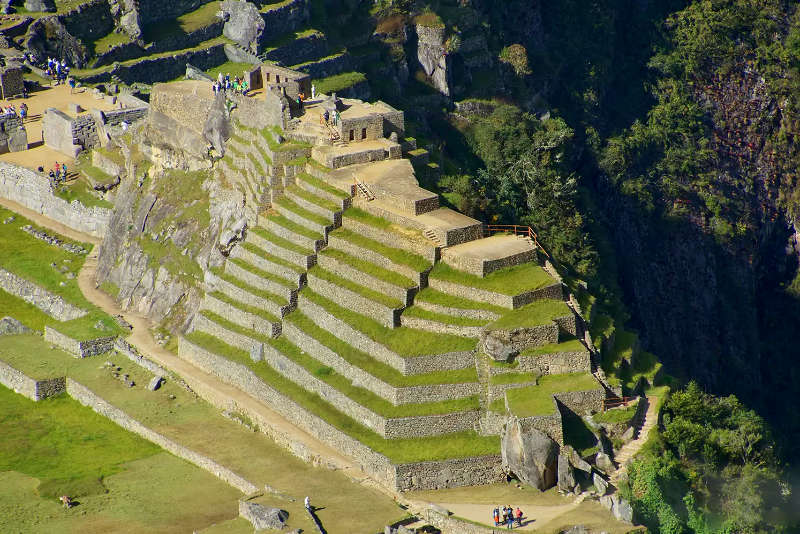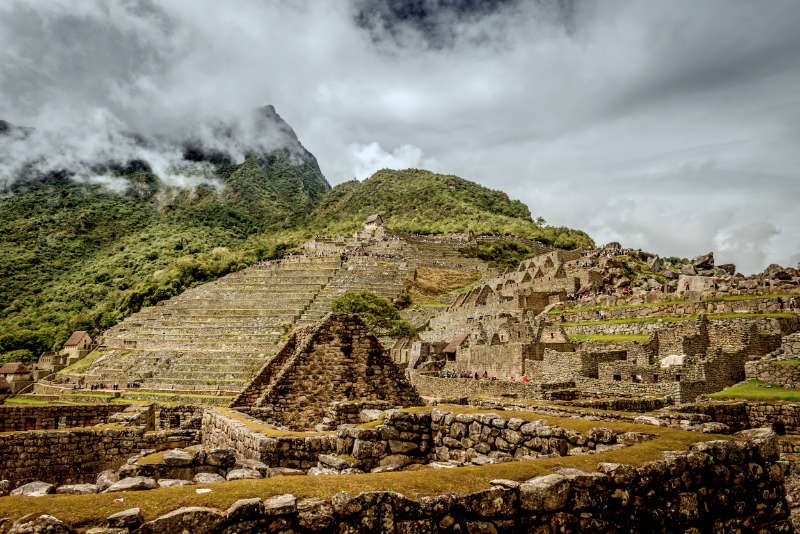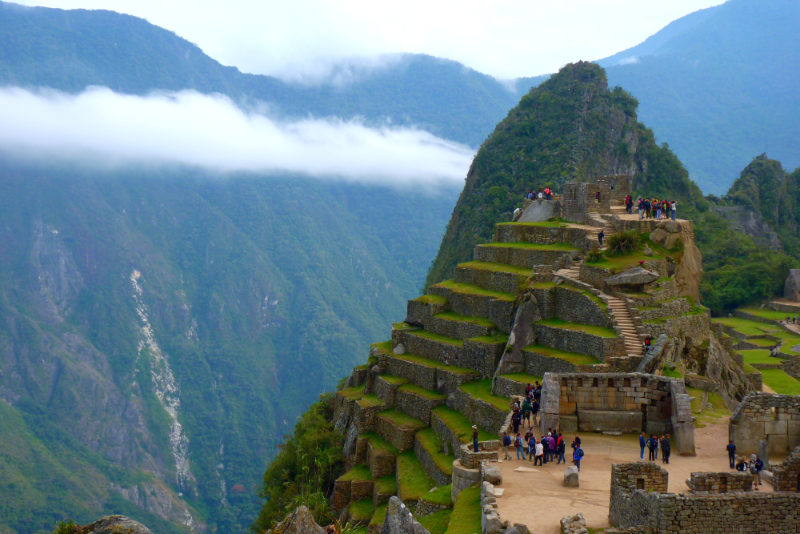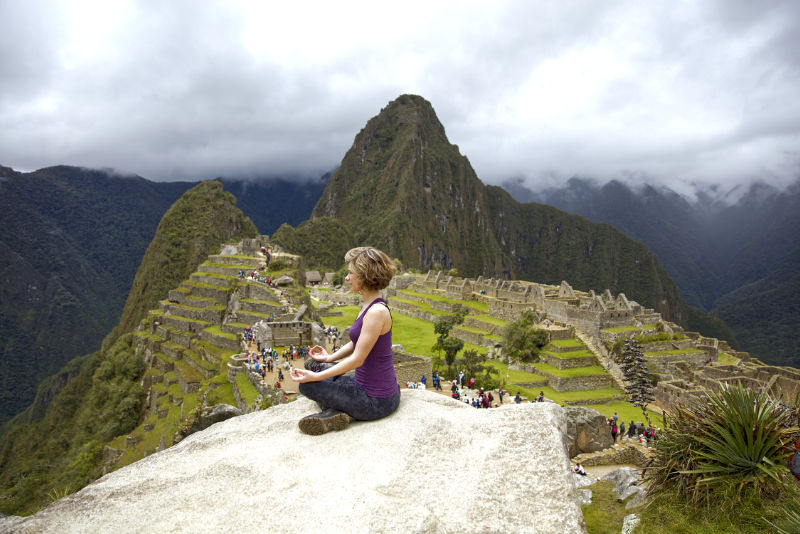Ticket Machu Picchu + Inti Punku: all information
Machu Picchu was a city that the Incas built in the eastern limits of the vast empire of the Tahuantinsuyo. There, to worship their gods, they built stone temples with fine carvings, which remain to this day in the archaeological site. Some of the most important Inca religious temples are the Temple of the Sun, the Main Temple, the Temple of the 3 Windows, the Intihuatana and more. To visit them it is necessary to choose one of the three available circuits: circuit 1, 2 or 3. These circuits are included in one of the ten new tickets. Which one to choose?
- Machu Picchu: the citadel and religious site of the Incas
- The main Inca religious temples in Machu Picchu
- Machu Picchu: Which ticket to choose? Which circuit to choose?
- Questions and answers about the main temples in Machu Picchu
Visiting hours at Machu Picchu
The archaeological site of Machu Picchu has strict visiting hours for each of its most important Inca temples and constructions. First, the Inca citadel is open for tourist visits every day of the year, even on holidays, Christmas, New Year’s, etc. Visiting hours are from 6 in the morning until 5 in the afternoon. Visitors can enter at the times indicated on their ticket. For example, the Machu Picchu Classic ticket allows up to ten entry times, from 6 am, 7 am, 8 am, and so on until 3 pm. The average visit duration with this ticket is 2 hours 30 minutes. This time can be longer if the ticket includes a hike; in those cases it extends up to 5 or 6 hours. Entry outside the time indicated on your ticket is not allowed. Only in the high‑ticket season (from June 19 to November 2) is a late time of 30 minutes permitted. Some temples have their own visiting hours. For example, the Temple of the Condor is open to visitors every day from 11 in the morning until 1 in the afternoon. It is recommended to purchase Machu Picchu tickets two or three months in advance (tickets with limited availability).
Machu Picchu: the citadel and religious site of the Incas
Machu Picchu was a city where around one thousand people lived in the Inca period, during the 15th century. It was ordered to be built by the great emperor Pachacutec in 1450 A.D. The place was chosen because of the proliferation of granitic stones, ideal for building this type of Inca construction. Also, because of its geographic location high on a mountain of the Amazon jungle, at the eastern limits of Machu Picchu.
The Incas built Machu Picchu atop a mountain (at the foot of the Machu Picchu mountain) because from there they had a privileged view of the entire valley. Also, because in the higher parts they could worship their gods: the sun (Inti), the moon (Quilla), the mountains (Apus), etc.
To worship their gods they built religious temples using granitic stone, abundant in the area. These temples were the most perfect, with the finest carving and the thinnest walls. Most were located in the upper part of the citadel, currently called the religious sector of Machu Picchu.
Today, in the archaeological site of Machu Picchu there are over 150 stone constructions recorded, among temples, enclosures, staircases, terraces, canals, plazas and more. Although there are not many temples, they are the most visited places in the tourist circuit. Notable constructions include the Temple of the Sun, the Main Temple, the Temple of the 3 Windows, the Intihuatana, the Sacred Rock, the Temple of the Condor, among others.
The main Inca religious temples in Machu Picchu
These are the main religious temples in Machu Picchu:
- The Temple of the Sun – The Temple of the Sun is the finest structure, with the best carving and the peculiarity that it has a semicircular structure with windows that receive the sun’s rays at certain times of the year. As its name indicates, it was built to honor the sun, the god Inti, the most important during the Inca period. Visitors cannot enter inside but can view it from an upper lookout or from the lower part of Machu Picchu.
- The Main Temple – The Main Temple was a large U‑shaped structure of three walls where the most important ceremonies in Machu Picchu were held. It has an altar or ceremonial table where mummies could be wrapped. It is located just in front of the Main Plaza in the heart of the religious sector of Machu Picchu. It can only be visited within circuit 2 of the archaeological site. It can be seen from the high mountains surrounding it.
- The Temple of the 3 Windows – The Temple of the 3 Windows was a large monolith made of large carved stone blocks in the form of three windows, which offer views of the high mountains and the majestic geography of the Inca citadel. As its name indicates, it is made up of three large windows that represent the Inca world in three levels: the world of the living (kai pacha), the world of the gods (hanan pacha) and the world of the dead (uku pacha)
- The Intihuatana – The Intihuatana is one of the most popular structures in Machu Picchu. Its name comes from two Quechua words (the language of the Incas) meaning ‘Sun Dial’ or ‘Where the Sun is tied’. It was an Inca calendar made up of a large three‑level stone monolith whose highest peak, when receiving the sun’s rays, shows via its shadow the time or season of the year. Thus the Incas could predict the right moment for planting or harvesting in Machu Picchu.
- The Sacred Rock – In the northern sector of Machu Picchu is this huge stone block that represents the mountains (the apus), considered sacred by the Incas. This large stone block stands on a rectangular base that supports it like an offering. It is said that the visitor, by bringing their hands close to the stone of the Sacred Rock, is filled with the mysterious energy of Machu Picchu. That is why this structure is very visited by tourists from around the world.
- The Temple of the Condor – The Temple of the Condor is a three‑dimensional representation of the Andean condor, a bird considered sacred by the Incas. The temple has a high structure shaped like a head and beak and another at the base, in the form of the bird’s body. Thus, by visually uniting these structures the figure of the Andean condor is formed. This bird represented the connection between the world of the living (kai pacha) with the world of the gods (hanan pacha). It is even considered that Machu Picchu, seen from its highest points, had the shape of a condor.
- The Temple of the Moon, the Great Cave – The Temple of the Moon, also known as the Great Cave, is one of the temples farthest from the core area of Machu Picchu as it is located on the slopes of Huayna Picchu mountain. The hike there is arduous through ascending and descending paths until reaching this structure carved inside a cave. The Incas considered caves sacred because they connected with the world of the dead (uku pacha). The temple has a ceremonial table where mummies were embalmed.
- The Intipunku, the Sun Gate – Intipunku was the Gate of the Sun, the main entrance and exit of Machu Picchu in the Inca period. Its name, translated from the Quechua language, means ‘Gate of the Sun’. It connected the qhapac ñan (Inca royal roads) from Cusco with Machu Picchu. Its stone walls, windows and niches receive the sun’s rays and offer a privileged view of the entire Inca citadel. It is at an altitude of 3,900 meters above sea level.
Machu Picchu: Which ticket to choose? Which circuit to choose?
These are the Machu Picchu tickets and the Inca temples they include:
| Ticket | Included temples | Duration | Availability | Booking time |
|---|---|---|---|---|
| Machu Picchu Mountain Route (1-A) | Not included (only the hike to the summit of Machu Picchu Mountain) | Up to 6 hours (including the hike to Machu Picchu Mountain) | All year round | 1 month before |
| Upper Terrace or Classic Photo Route (1-B) | Not included (only the classic photo and the panoramic view of the archaeological site) | 2 hours 30 minutes | All year round | 1 month before |
| Inti Punku Gate Route (1-C) | Not included (only the hike to the Inti Punku Gate) | Up to 4 hours (including the hike to the Inti Punku Gate) | High‑ticket season (June 19 – November 2) | 1 month before |
| Inca Bridge Route (1-D) | Not included (only the hike to the mystical Inca Bridge) | Up to 3 hours (including the hike to the Inca Bridge) | High‑ticket season (June 19 – November 2) | 1 month before |
| Classic Designed Route (2-A) | The Temple of the Sun, Main Temple, Temple of the 3 Windows, Sacred Plaza, Sacred Fountains and the Sacred Rock | 2 hours 30 minutes | All year round | 3 months before |
| Classic Lower Terrace Route (2-B) | The Temple of the Sun, Main Temple, Temple of the 3 Windows, Sacred Plaza, Sacred Fountains and the Sacred Rock | 2 hours 30 minutes | All year round | 3 months before |
| Huayna Picchu Mountain Route (3-A) | The Temple of the Sun, House of the Inca, Temple of the Condor, the Sacred Rock and the Royal Tomb, plus the hike to the Huayna Picchu Mountain | Up to 5 hours (including the hike to the Huayna Picchu Mountain) | All year round | 2 months before |
| Royalty Designed or Lower Temples Route (3-B) | The Temple of the Sun, House of the Inca, Temple of the Condor, the Sacred Rock and the Royal Tomb | 2 hours 30 minutes | All year round | 2 months before |
| Great Cave or Temple of the Moon Route (3-C) | The Temple of the Sun, House of the Inca, Temple of the Condor, the Sacred Rock and the Royal Tomb, plus the hike to the Great Cave | Up to 5 hours (including the hike to the Great Cave) | High‑ticket season (June 19 – November 2) | 1 month before |
| Huchuy Picchu Mountain Route (3-D) | The Temple of the Sun, House of the Inca, Temple of the Condor, the Sacred Rock and the Royal Tomb, plus the hike to the Huchuy Picchu mountain | Up to 4 hours (including the hike to the Huchuy Picchu mountain) | High‑ticket season (June 19 – November 2) | 2 months before |
The high‑ticket season
From June 19 to November 2 all 10 Machu Picchu tickets will be available, so you’ll have more options to live unforgettable experiences inside the Inca citadel. During the rest of the year (November 3 to June 18) only 6 tickets will be enabled, although they are the most classic and popular among visitors. Also remember that on December 30 and 31 all tickets will be available.
Questions and answers about the main temples in Machu Picchu
1) With which Machu Picchu ticket can you visit the Temple of the Sun?
The Temple of the Sun is included in six tickets: a) Classic Designed route (2‑A), b) Classic Lower Terrace route (2‑B), c) Royalty Designed or Lower Temples route (3‑B), d) Huayna Picchu Mountain route (3‑A), e) Huchuy Picchu route (3‑D) and f) Great Cave or Temple of the Moon route (3‑C).
2) With which Machu Picchu ticket can you visit the Intihuatana?
The Intihuatana is not open for tourist visits with any type of ticket (as a protection measure).
3) With which Machu Picchu ticket can you visit the Main Temple?
The Main Temple is included in two tickets: a) Classic Designed route (2‑A) and b) Classic Lower Terrace route (2‑B).
4) With which Machu Picchu ticket can you visit the Temple of the 3 Windows?
The Temple of the 3 Windows is included in two tickets: a) Classic Designed route (2‑A) and b) Classic Lower Terrace route (2‑B).
5) With which Machu Picchu ticket can you visit the Temple of the Moon?
The Temple of the Moon or Great Cave is included in one ticket: a) Great Cave or Temple of the Moon route (3‑C).
6) With which Machu Picchu ticket can you visit the Temple of the Condor?
The Temple of the Condor is included in four types of tickets: a) Huayna Picchu Mountain route (3‑A), b) Royalty Designed or Lower Temples route (3‑B), c) Great Cave or Temple of the Moon route (3‑C) and d) Huchuy Picchu route (3‑D).
7) With which Machu Picchu ticket can you visit the Intipunku?
The Intipunku is included in one ticket type: a) Inti Punku Gate Route (1‑C), which is only available during the high‑ticket season (June 19 to November 2)
8) With which Machu Picchu ticket can you visit the Sacred Rock?
The Sacred Rock is included in six types of tickets: a) Classic Designed route (2‑A), b) Classic Lower Terrace route (2‑B), c) Royalty Designed or Lower Temples route (3‑B), d) Huayna Picchu Mountain route (3‑A), e) Huchuy Picchu route (3‑D) and f) Great Cave or Temple of the Moon route (3‑C).
9) Which circuit in Machu Picchu includes the majority of Inca temples?
Circuit 2 is the one that includes the most Inca temples in its itinerary.
10) Which circuit does not include any Inca temple in Machu Picchu?
Circuit 1 does not include any Inca temple in its itinerary.
Advice from people who have been there
 By: Alexa B.
By: Alexa B.“Machu Picchu amazing“
“I never get tired of looking at my photos in Machu Picchu, really. Every time I see them I get an enormous desire to go back. I would go a thousand times if I could, without hesitation. The food is delicious, the mountains are crazy and the people are super friendly. It’s one of those places you simply don’t forget.“
By Ticket Machu Picchu – Last updated, September 11, 2025



